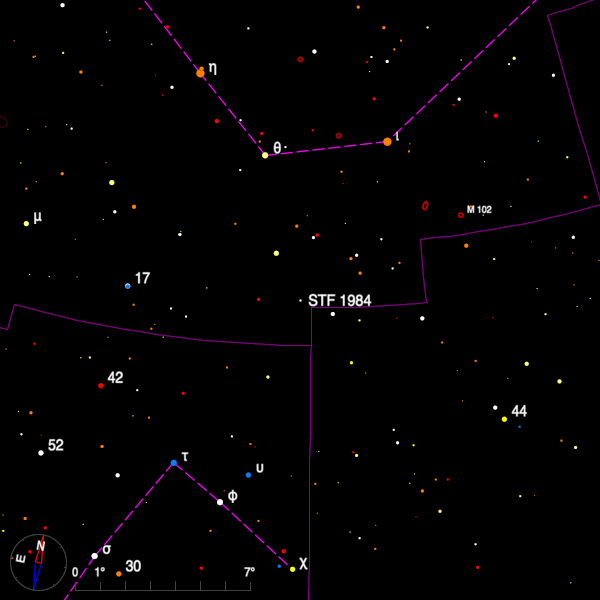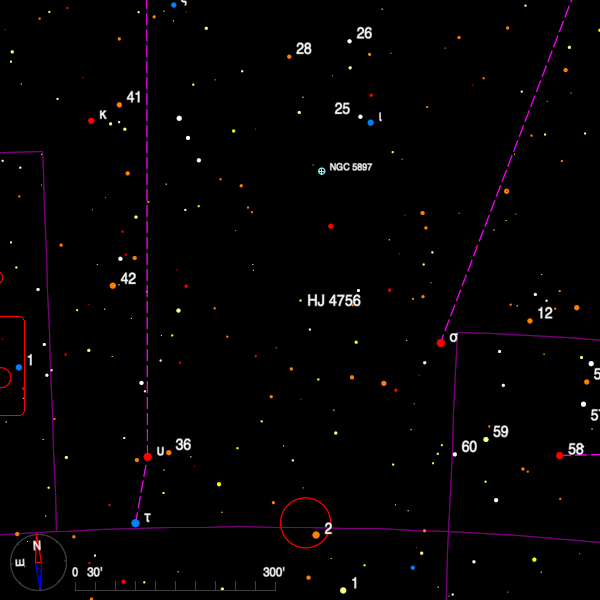June 2024 - Double Star of the Month
STF 1984 (15 51 10.09 +52 54 25) lies in south-eastern Draco almost on the border with Boötes in a rather featureless part of the sky, which may be why I have no record of observing this pair during my early visual survey.
I did make a measure with the 8-inch Cambridge Cooke telescope giving 279 degrees, 6".4 in late 2009. An aperture of 10-cm should show the two stars which form this system - the magnitudes are 6.9 and 8.9.

Although Gaia DR3 places the stars at similar distances (around 370 light-years), the formal errors on the parallaxes are significantly smaller than the parallax difference between the components, so whether the stars form a binary system is open to some doubt.
In May 1874 S. W. Burnham was observing stars in Scorpius with his 6-inch Alvan Clark refractor and more specifically he was looking for HJ 4756 - a close pair discovered by John Herschel some 40 years earlier. He found a pair which vaguely resembled the HJ pair but its position did not correspond very well to the catalogue position so Burnham called the pair BU 228. He later realized that this was indeed the Herschel pair HJ 4756 (15 19 40.37 -24 16 11.9).

The stars are magnitudes 7.9 and 8.3 and are currently slowing closing in a 500-year orbit. The current position is 229 degrees and 0".65 so a 25-cm telescope will be needed and more importantly, if observing from Europe, a night of high quality.
Some 30 seconds of RA directly preceding is BU 227, an easier pair which drew from Burnham the comment that It is singular that he (Herschel) should have missed the other pair
i.e. this one. The stars have magnitudes 7.5 and 8.6 and are currently 2 arc-seconds apart in PA 160 degrees, so should be divisible in 10—15 cm. The stars can be found 3 degrees ENE of sigma Lib.
Bob Argyle - Double Star Section Director